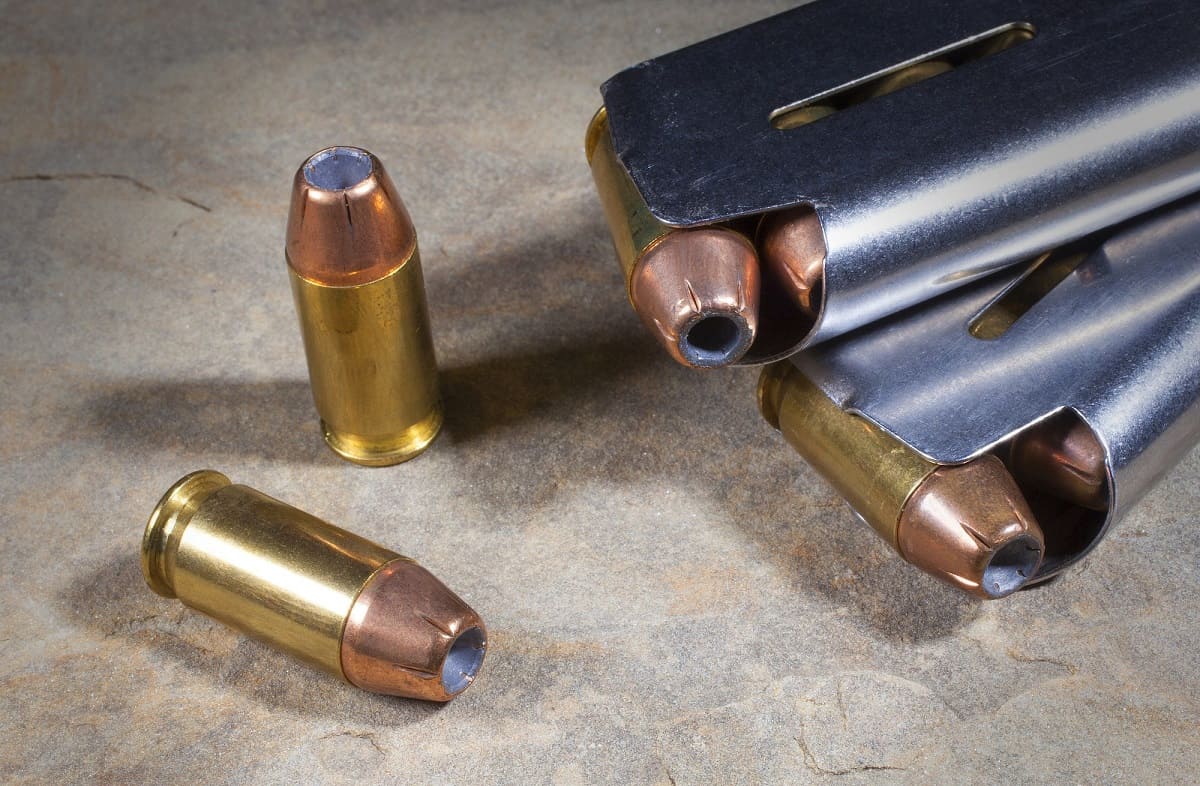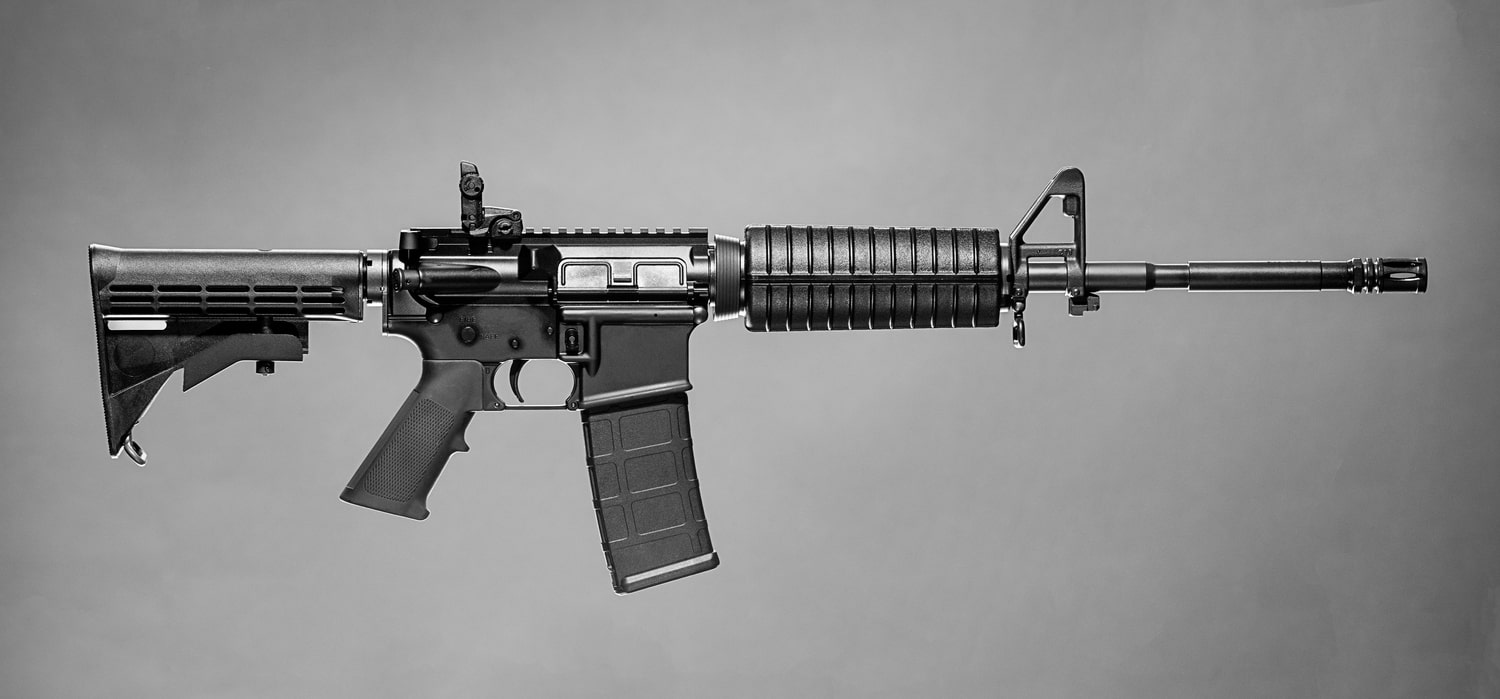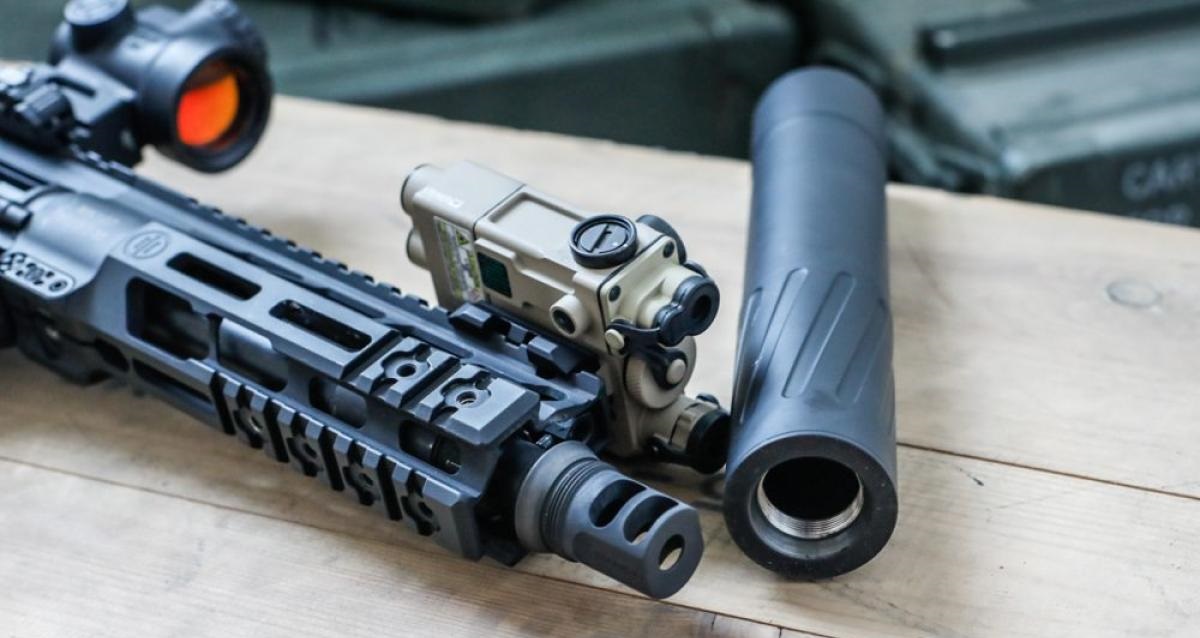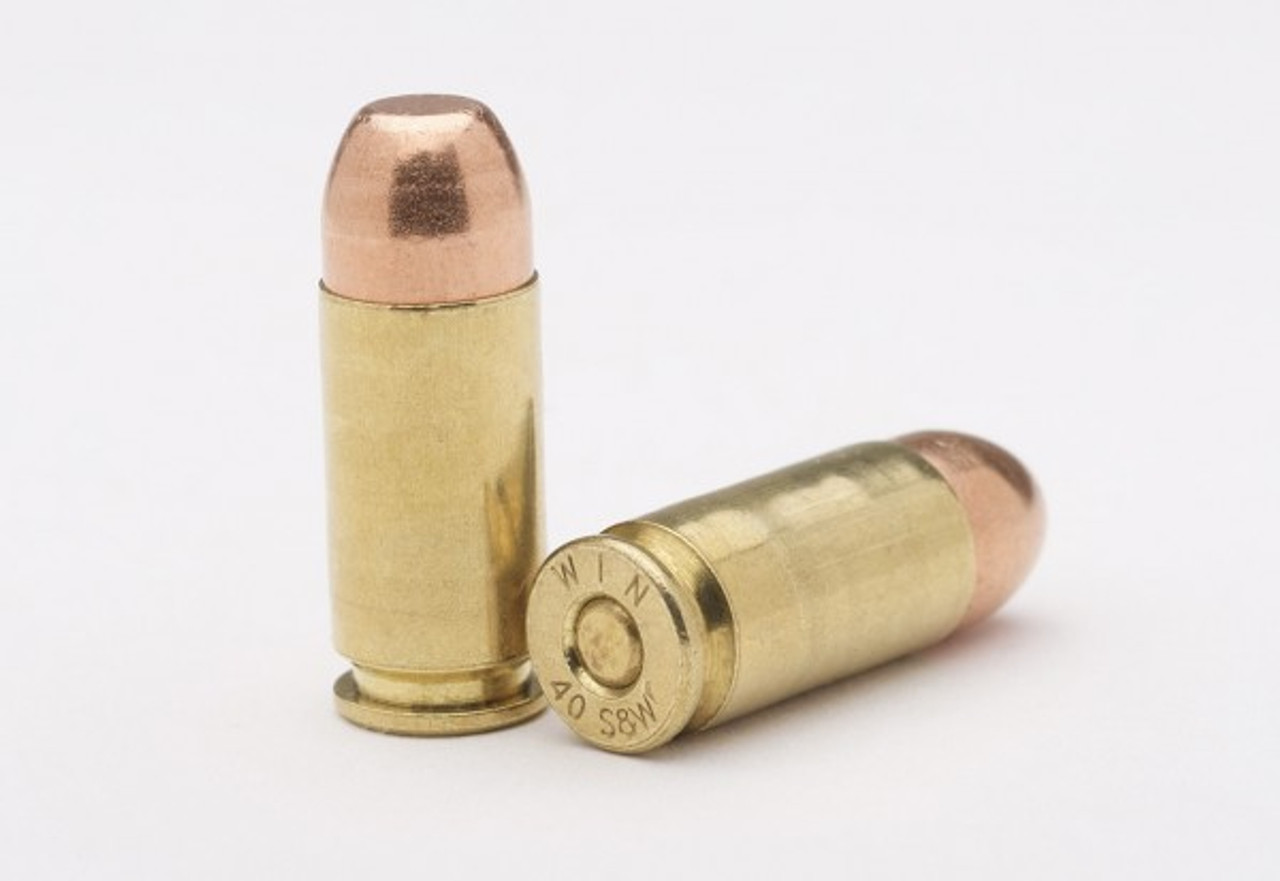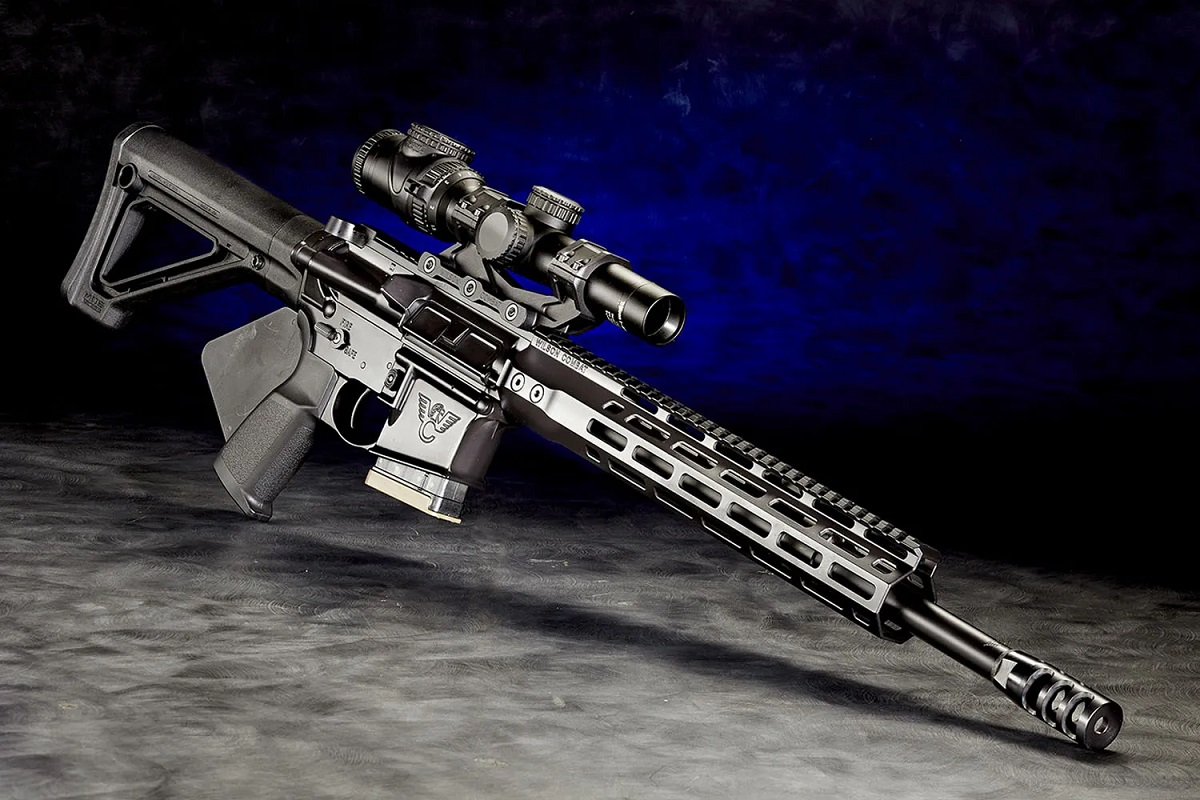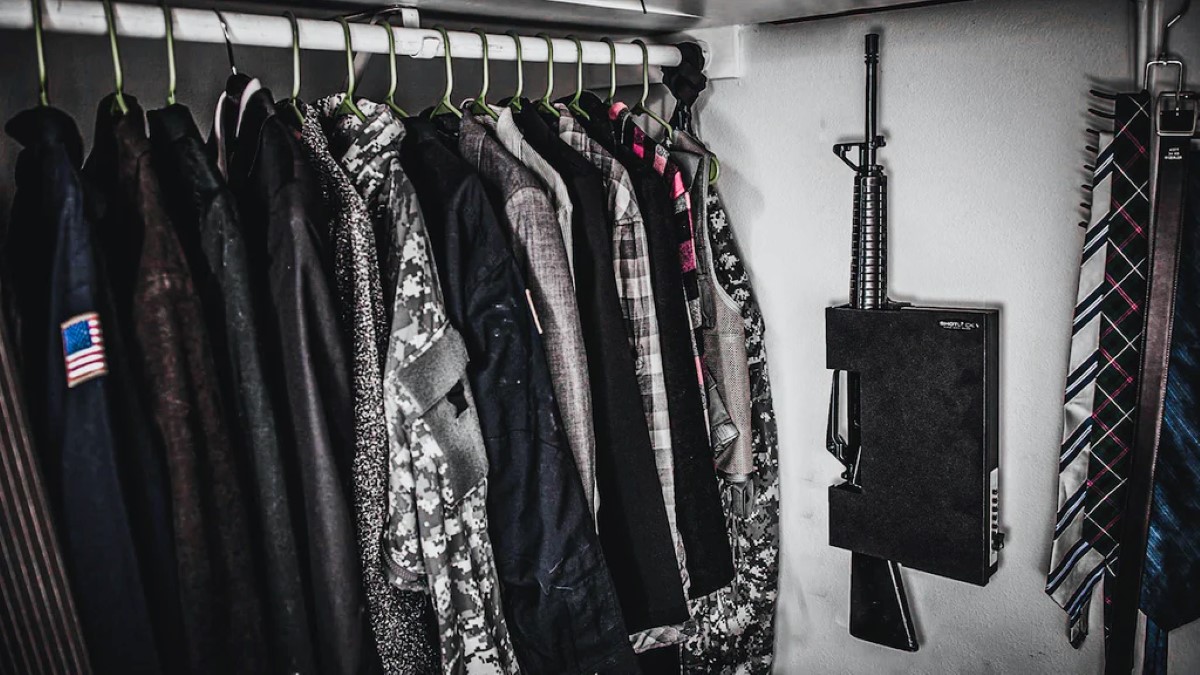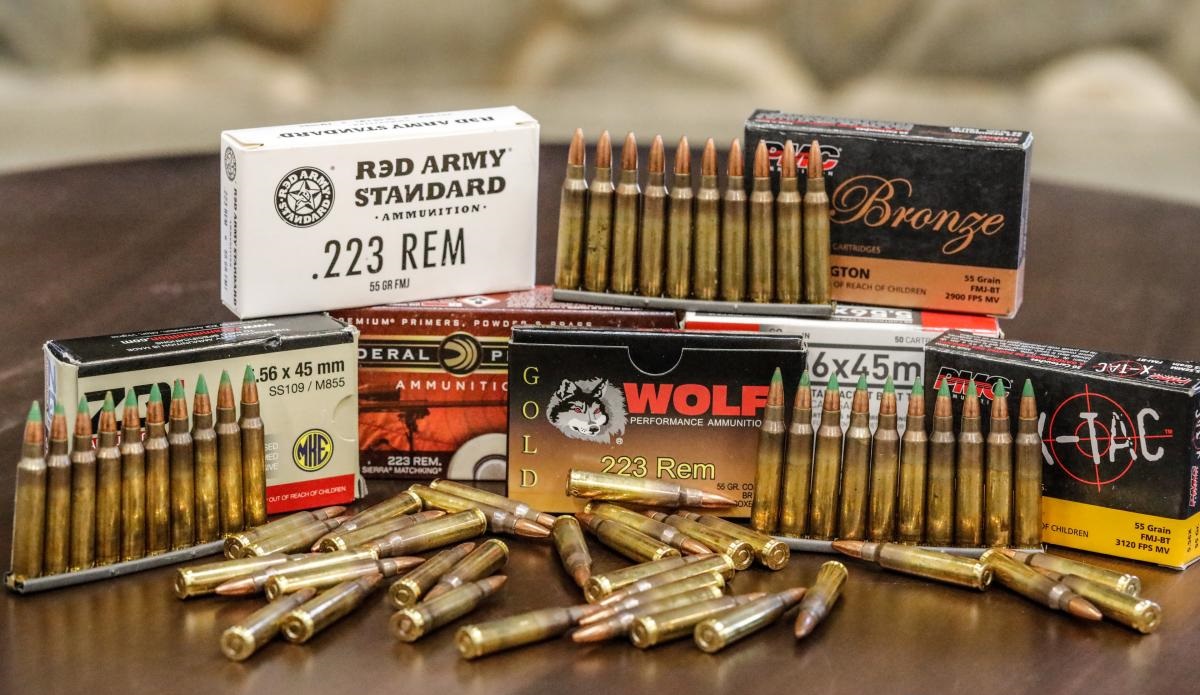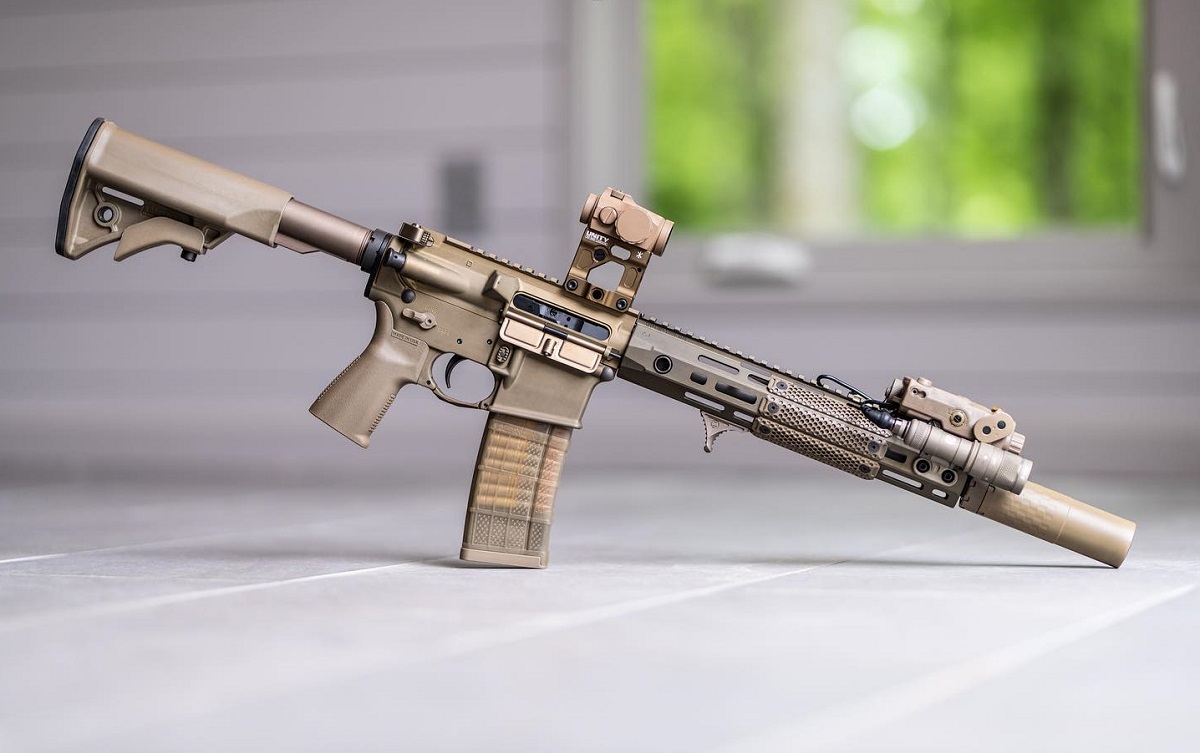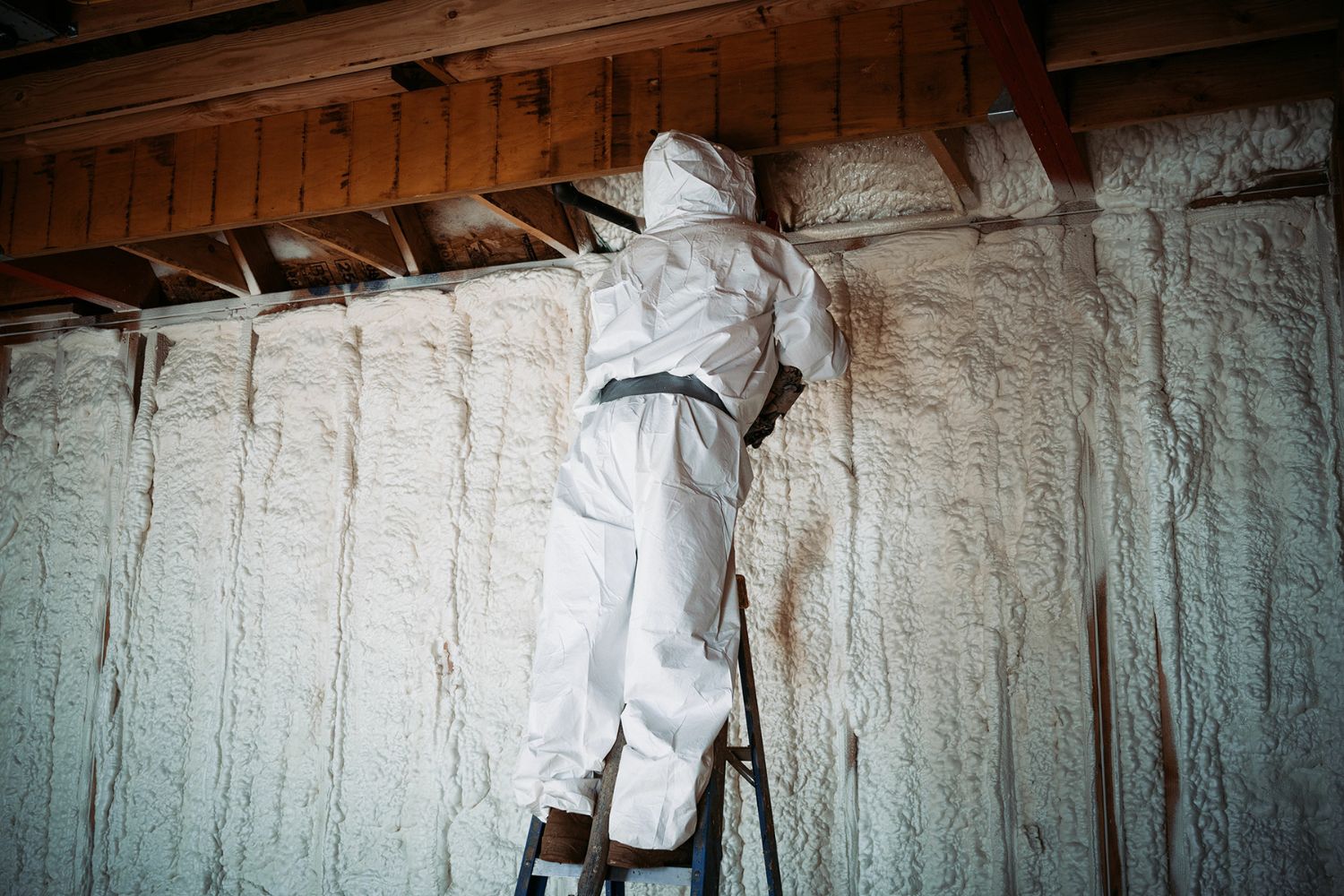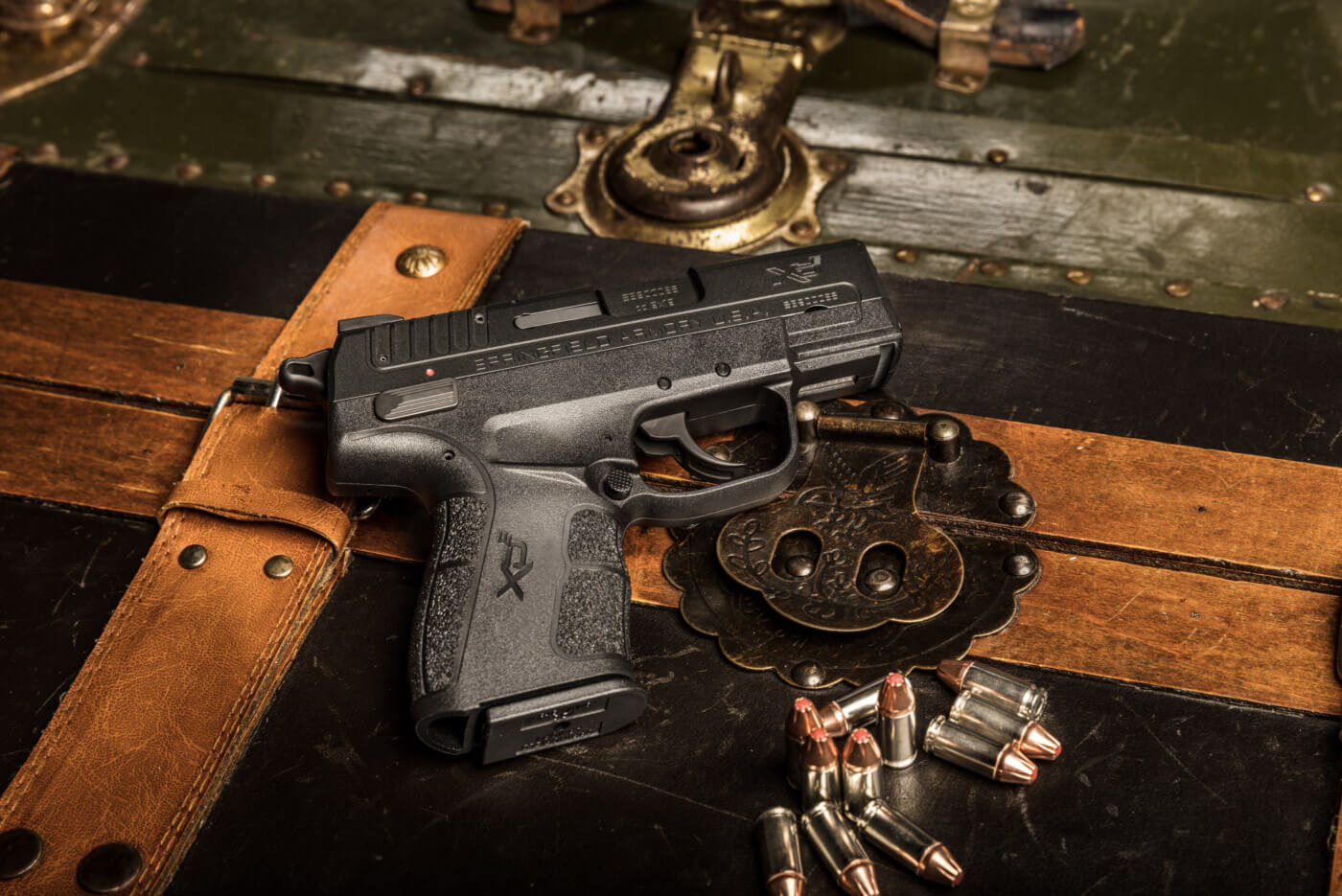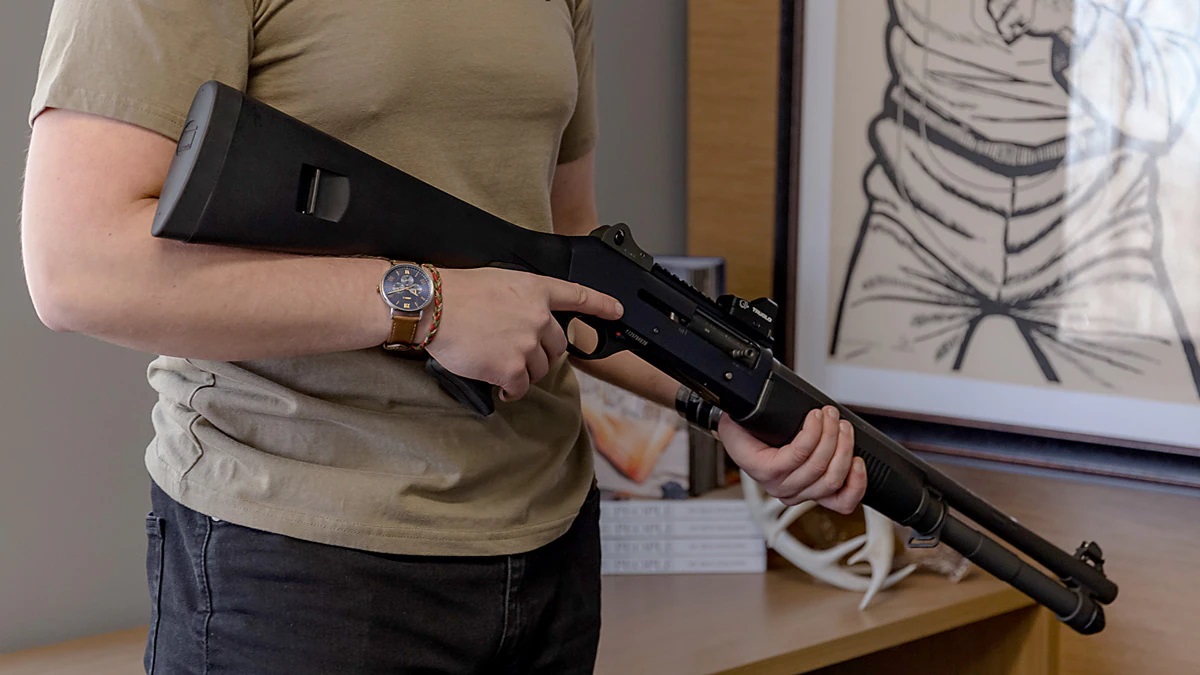Home>Home Security and Surveillance>Why AR-15 Is Bad For Home Defense
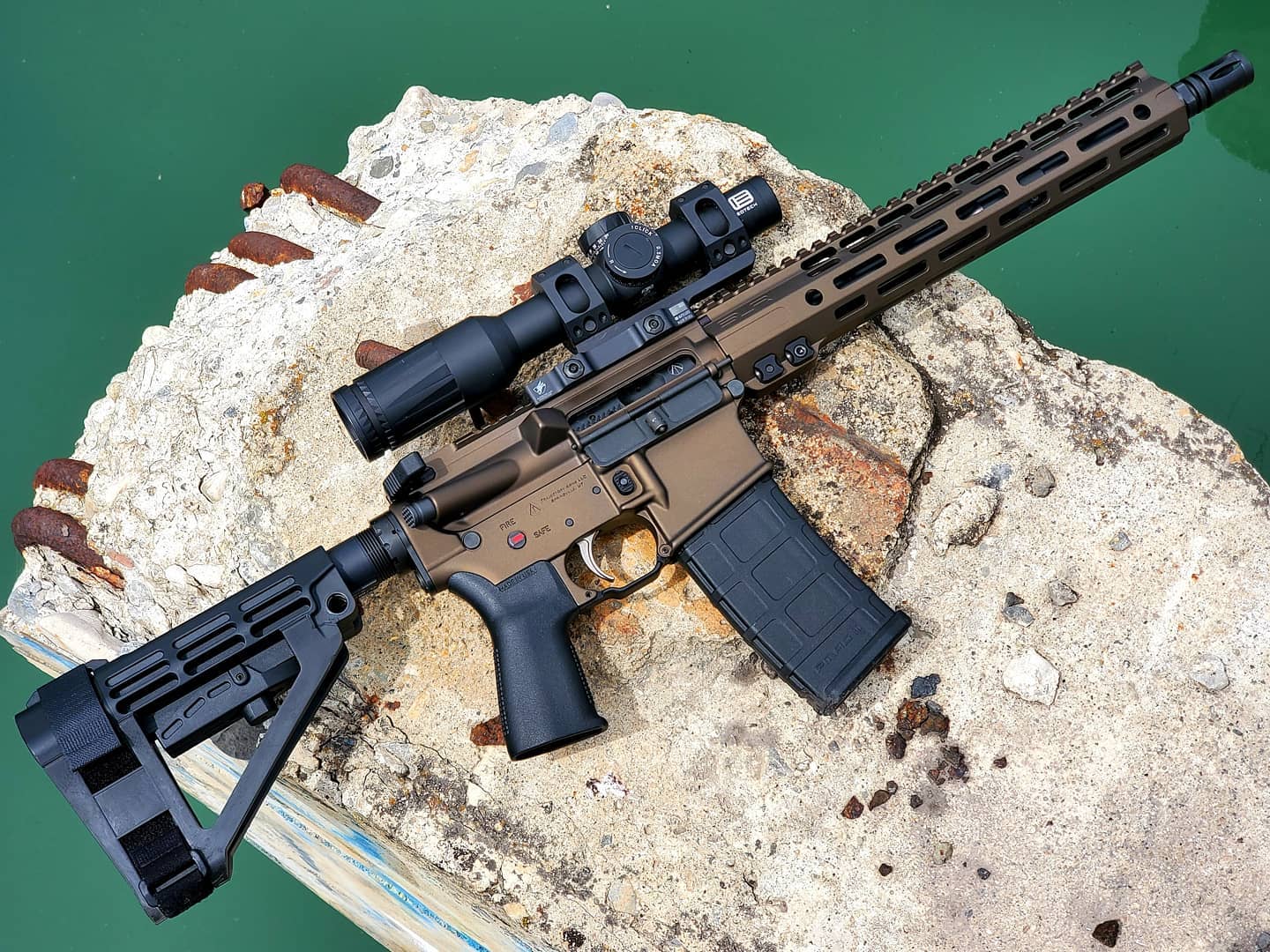

Home Security and Surveillance
Why AR-15 Is Bad For Home Defense
Modified: March 6, 2024
Discover why the AR-15 is not recommended for home defense, and find alternatives for reliable home security and surveillance solutions.
(Many of the links in this article redirect to a specific reviewed product. Your purchase of these products through affiliate links helps to generate commission for Storables.com, at no extra cost. Learn more)
Introduction
When it comes to protecting your home and loved ones, choosing the right firearm for home defense is crucial. While the AR-15 may be a popular choice among gun enthusiasts and for certain purposes, it may not be the best option for home defense. In this article, we will discuss the reasons why the AR-15 may not be suitable for protecting your home and explore alternative options that are better suited for this purpose.
It is important to note that home defense situations require firearms that prioritize safety, maneuverability, and effectiveness in confined spaces. While the AR-15 has its merits in terms of versatility, range, and customization options, it also has several drawbacks that make it less than ideal for home defense scenarios.
Throughout this article, we will delve into the various reasons why the AR-15 may not be the best choice for home defense. We will discuss the lack of stopping power, the risks of over-penetration, the limited maneuverability in close quarters, the inaccuracy for novice shooters, the high recoil and manageability issues, the limited ammunition capacity, and the legal restrictions and public perception surrounding this particular firearm.
By exploring these factors in detail, we aim to provide you with a comprehensive understanding of why the AR-15 may not be the optimal choice for home defense and guide you towards alternative options that can better meet your needs and ensure the safety of your home and loved ones.
Key Takeaways:
- The AR-15 may not be the best choice for home defense due to its limited stopping power, high risk of over-penetration, and difficulty in close-quarters maneuvering, making alternative firearms like handguns or shotguns more suitable for protecting your home and loved ones.
- Legal restrictions and public perception surrounding the AR-15 should be considered when choosing a firearm for home defense, as they can impact community relationships and overall safety. It’s important to prioritize factors like stopping power, maneuverability, and ammunition capacity to ensure the safety and well-being of yourself, your family, and your property.
Read more: Why An AR-15 For Home Defense
Lack of Stopping Power
One of the main concerns when it comes to home defense is the ability of a firearm to quickly and effectively stop an intruder or threat. While the AR-15 is a powerful rifle, it lacks the stopping power of other firearms that are specifically designed for close-quarters combat.
The AR-15 typically fires intermediate cartridges such as the .223 Remington or 5.56x45mm NATO, which are smaller and less powerful compared to larger calibers like the .45 ACP or 12-gauge shotgun shells. This means that the effectiveness of the AR-15 in stopping an intruder or threat may be somewhat limited, especially if the person is determined or heavily armored.
In a home defense situation, you want a firearm that can incapacitate an individual quickly, preventing them from causing harm to you or your family. Larger caliber handguns or shotguns, with their larger projectiles and greater stopping power, are often more suitable for this purpose.
It is important to consider that the AR-15’s intermediate cartridges are designed for long-range accuracy, making them better suited for outdoor shooting or tactical situations where engagement distances are typically longer. In a home defense scenario, where engagement distances are relatively short, the limited stopping power of the AR-15 can be a significant disadvantage.
Furthermore, the high velocity of intermediate cartridges can also lead to concerns about over-penetration, which we will discuss in the next section. Home defense situations require a balance between stopping power and the ability to minimize collateral damage, and the AR-15’s lack of stopping power may tip the scales unfavorably in this regard.
Over-Penetration Risks
Over-penetration is a critical concern when it comes to home defense. It refers to the ability of a projectile to pass through walls, doors, or other barriers and continue traveling with lethal force. This poses a significant risk to innocent bystanders or family members who may be nearby during a home invasion or intruder scenario.
The AR-15, with its high-velocity intermediate cartridges, has the potential to over-penetrate more readily than other firearms. The small, high-velocity projectiles are designed to travel at exceptional speeds and maintain their energy over long distances. While this is advantageous for long-range accuracy, it becomes a liability in close-quarters scenarios.
When dealing with a home intrusion, the last thing you want is for bullets to penetrate walls and put your loved ones at risk. Home construction materials such as drywall or insulation are no match for the penetrating power of AR-15 rounds. Even with proper shot placement, the risk of collateral damage and injury to unintended targets is significantly higher.
In contrast, firearms with lower-velocity projectiles, such as shotguns and handguns with hollow-point ammunition, are less likely to over-penetrate. These firearms are often better suited for home defense as they are less likely to pose a serious risk to individuals in adjacent rooms or neighboring properties.
It is important to note that proper shooting techniques and ammunition selection can minimize the risk of over-penetration even with the AR-15. However, it requires extensive training and knowledge to effectively mitigate these risks. For most homeowners, choosing a firearm with lower penetration capabilities is a safer and more practical option for home defense.
Overall, the potential for over-penetration is a significant factor to consider when evaluating the suitability of the AR-15 for home defense. The primary objective is to neutralize threats while minimizing the risk to innocent individuals who may be present in the vicinity.
Limited Maneuverability
One crucial aspect of home defense is the ability to move freely and navigate confined spaces with ease. Unfortunately, the AR-15’s design and length can hinder maneuverability in tight or cramped environments, such as hallways or doorways.
The AR-15 is a rifle platform with a relatively long barrel length, typically around 16 to 20 inches. While this length is advantageous for accuracy and long-range shooting, it can become a liability in close-quarters situations. The longer barrel makes it more challenging to maneuver quickly and effectively, potentially slowing down your response time in critical moments.
Moreover, the overall length of the AR-15, including the stock, adds to its bulkiness and may make it difficult to maneuver in tight spaces. This could impede your ability to effectively navigate through doorways or around corners, limiting your options in encountering and neutralizing threats.
In contrast, firearms designed specifically for close-quarters combat, such as handguns or short-barreled shotguns, offer greater maneuverability in tight spaces. Their compact dimensions and shorter barrel lengths allow for easier handling and swift movement, making them better suited for home defense scenarios.
It is important to prioritize versatility and ease of movement when choosing a firearm for home defense. The ability to swiftly and effectively respond to a threat can be a critical factor in ensuring the safety of yourself, your family, and your property.
While the AR-15 may excel in other contexts, its limitations in maneuverability for close-quarters engagement make it a less optimal choice for home defense compared to firearms designed specifically for this purpose.
Difficulty in Close Quarters
Home defense situations often require engaging threats in close-quarters environments, such as hallways, stairwells, or small rooms. Unfortunately, the AR-15’s design and length can pose challenges when operating in these confined spaces.
The AR-15, with its longer barrel and overall length, can be unwieldy and difficult to maneuver in close quarters. Its size and weight can make it challenging to quickly bring the firearm to bear on a target or effectively navigate tight spaces. This can hamper your ability to respond swiftly and accurately when faced with an intruder or threat in your home.
Furthermore, the AR-15’s rifle configuration and stock design may not be ideal for close-quarters engagement. The rifle stock, typically extending from the back of the receiver, can limit your ability to maintain a compact shooting position in tight spaces. This can affect your stability and hinder your ability to quickly acquire targets or transition between them.
In contrast, firearms specifically designed for close-quarters combat, like handguns or shotguns, offer greater maneuverability and ease of use in confined spaces. Their compact size and ergonomic designs make them easier to handle and operate in close-quarters scenarios.
Additionally, firearms like shotguns have the advantage of a wide spread pattern with their shotgun shells, increasing the likelihood of hitting the target in close-quarters engagements even with minimal aiming required.
When choosing a firearm for home defense, it is important to consider the specific environment in which it will be used. If your home has narrow hallways or small rooms, a firearm that is better suited for close-quarters engagement may prove to be more effective and efficient in these situations.
In summary, the AR-15’s length and configuration can make it more difficult to handle and maneuver in close quarters, potentially compromising your ability to effectively defend yourself and your home. Considering the unique challenges of close-quarters engagement, it is advisable to explore alternative firearm options that offer greater ease of use and maneuverability in such situations.
Consider using a shotgun or handgun for home defense instead of an AR-15. The high velocity and over-penetration of AR-15 rounds can pose a greater risk to bystanders in a home defense situation.
Read more: How To Store AR-15 For Home Defense
Inaccuracy for Novice Shooters
When it comes to home defense, it is important to consider the skill level and experience of the individuals who may be using the firearm, especially if they are novice shooters. The AR-15, with its design characteristics, may present challenges in terms of accuracy for those who are less experienced with firearms.
The AR-15 is a semi-automatic rifle chambered for intermediate cartridges, which typically produce higher recoil compared to handguns or smaller caliber firearms. For novice shooters, this can lead to difficulties in managing recoil and maintaining accurate shot placement.
The rifle platform of the AR-15, with its longer sight radius and smaller iron sights, may also require more skill and practice to achieve accurate aim, especially in high-stress situations. Novice shooters may struggle with the proper sight alignment and sight picture, which can impact their ability to effectively hit their target under pressure.
Additionally, the lighter weight and higher rate of fire of the AR-15 can contribute to more pronounced muzzle rise during rapid fire, further affecting accuracy and shot placement, particularly for less experienced shooters.
In home defense situations, accuracy is vital to avoid hitting innocent individuals or unintentional property damage. Firearms that are more forgiving and easier to handle, such as handguns or shotguns, can offer better accuracy and increased confidence for novice shooters.
It should be noted that with proper training, practice, and experience, a novice shooter can become proficient and accurate with an AR-15. However, for most individuals seeking a home defense firearm, it may be more practical to opt for a firearm that is inherently more forgiving and easier to handle, allowing for better accuracy and confidence in critical situations.
Ultimately, the AR-15’s potential inaccuracy for novice shooters should be a consideration when choosing a firearm for home defense, as it is vital to select a firearm that can be effectively and accurately operated by the individuals tasked with protecting their home and loved ones.
High Recoil and Manageability
When evaluating a firearm for home defense, it is crucial to consider the recoil and overall manageability, especially in high-stress situations. The AR-15, despite its many advantages, can pose challenges in terms of recoil and ease of control.
The AR-15 typically chambered in intermediate cartridges, such as the .223 Remington or 5.56x45mm NATO, can produce notable recoil, particularly for individuals who are not accustomed to shooting rifles. The high recoil can make it more difficult to maintain accurate shot placement and can affect follow-up shots. This is especially important in home defense scenarios where quick and accurate target engagement is essential.
Furthermore, the AR-15’s lighter weight and shorter barrel can contribute to increased recoil and muzzle rise, which further impacts manageability. Novice shooters or individuals with limited upper body strength may struggle to effectively control the firearm, leading to decreased accuracy and potentially compromising their ability to neutralize threats effectively.
In contrast, firearms with lower recoil, such as handguns or shotguns, can offer greater manageability for individuals with less experience or physical strength. These firearms tend to have heavier frames or stocks that absorb recoil, helping to keep the muzzle on target and allowing for quicker follow-up shots.
It is important to remember that proper training and practice can help mitigate the challenges of recoil and improve manageability with the AR-15. However, for those seeking a home defense firearm, it is crucial to select a firearm that can be confidently and effectively managed in high-stress situations.
By opting for a firearm with lower recoil and superior manageability, individuals can improve their ability to deliver accurate and controlled shots, leading to greater overall effectiveness in home defense scenarios.
Ultimately, the high recoil and manageability challenges associated with the AR-15 should be taken into consideration when selecting a firearm for home defense, as these factors can significantly impact an individual’s ability to effectively respond to threats and protect their home and loved ones.
Limited Ammunition Capacity
When it comes to home defense, having an ample supply of ammunition is vital. Unfortunately, the AR-15’s magazine capacity may be seen as a drawback in certain situations.
The standard magazine capacity for most AR-15 rifles is generally around 30 rounds, although there are variations available with higher capacities. While this may seem like a large number of rounds, it is worth considering the potential duration of a home defense encounter.
In a high-stress situation, adrenaline is pumping, and accuracy may be compromised. If multiple threats are present or there are multiple individuals involved, the number of rounds needed can quickly accumulate.
Compared to other firearms like shotguns or handguns, which typically have smaller magazine capacities, the limited ammunition capacity of the AR-15 may be seen as a disadvantage in potential extended engagements or scenarios involving multiple assailants.
It is essential to evaluate the potential need for reloading during a home defense scenario and the time it takes to reload an AR-15 compared to other firearms. Reloading can be a critical moment where an individual is vulnerable and may be unable to defend themselves effectively.
Alternatively, shotguns or handguns with larger capacity magazines or speed loaders provide the advantage of more rounds readily available without the need for frequent reloading.
While it is possible to carry additional magazines for the AR-15, the need for quick reloading and the limited ammunition capacity are factors that should be considered when selecting a firearm for home defense.
Ultimately, the limited ammunition capacity of the AR-15 may not make it the most ideal choice for home defense scenarios that may require extended engagements or involve multiple assailants. It is important to carefully assess your specific needs and the potential threat scenarios you may face when considering your choice of firearm.
Legal Restrictions and Public Perception
When considering a firearm for home defense, it is important to be aware of the legal restrictions and public perception surrounding certain types of firearms, including the AR-15.
In many jurisdictions, there are legal restrictions and regulations in place regarding the ownership, possession, and use of certain firearms, including the AR-15. These regulations may vary depending on your country, state, or local laws. It is essential to research and understand the legal requirements and restrictions in your area before purchasing or using an AR-15 for home defense.
Additionally, the AR-15 and similar rifles have garnered significant attention and controversy in recent years due to their use in high-profile incidents. As such, they have become a subject of public scrutiny and debate, resulting in varying perceptions and opinions surrounding their ownership and use.
Public perception surrounding the AR-15 can impact how others view your intent and purpose for owning such a firearm. Certain community members, neighbors, or even family members may have concerns or reservations about the presence of a rifle-like the AR-15 in a residential setting. It is important to consider these perceptions and how they may impact your relationships and the overall safety and security of your home.
It is worth noting that public perception and legal restrictions can change over time, and the acceptance or scrutiny surrounding the ownership and use of the AR-15 may vary in different regions or communities. Therefore, it is paramount to stay informed about current laws and maintain open lines of communication with your local law enforcement agencies to ensure compliance and minimize potential conflicts.
When it comes to home defense, selecting a firearm that is legally permissible and aligns with public perception may help alleviate concerns or potential legal issues that could arise from using a restricted or controversial weapon like the AR-15.
Ultimately, understanding and adhering to the legal restrictions and being mindful of public perception can contribute to fostering a safe and secure environment while maintaining a positive relationship with your community.
Read more: How To Use AR-15 For Home Defense
Conclusion
Choosing the right firearm for home defense is a crucial decision that requires careful consideration. While the AR-15 is a popular and versatile firearm, it may not be the best option for protecting your home and loved ones.
Throughout this article, we have discussed several reasons why the AR-15 may be less suitable for home defense. We have explored the lack of stopping power, the risks of over-penetration, the limited maneuverability in tight spaces, the difficulty in close-quarters engagements, the potential inaccuracy for novice shooters, the high recoil and manageability challenges, the limited ammunition capacity, as well as the legal restrictions and public perception surrounding this firearm.
While the AR-15 excels in other contexts, such as long-range shooting or tactical situations, it may not possess the optimal characteristics needed for home defense scenarios.
Alternative firearms such as handguns or shotguns are often better suited for home defense. These firearms offer greater stopping power, reduced risk of over-penetration, improved maneuverability in close quarters, increased accuracy for novice shooters, lower recoil for better manageability, and the potential for higher ammunition capacity.
In addition, it is essential to consider the legal restrictions and public perception surrounding the AR-15, as well as the potential impact this can have on your community relationships and the overall safety and security of your home.
In conclusion, when selecting a firearm for home defense, it is crucial to prioritize factors such as stopping power, over-penetration risks, maneuverability, accuracy, recoil, ammunition capacity, legal restrictions, and public perception. By carefully considering these aspects and choosing a firearm that aligns with your specific needs and the unique characteristics of your home, you can better ensure the safety and well-being of yourself, your family, and your property.
Remember, proper training, regular practice, and adherence to the law are essential components of responsible firearm ownership and effective home defense.
Frequently Asked Questions about Why AR-15 Is Bad For Home Defense
Was this page helpful?
At Storables.com, we guarantee accurate and reliable information. Our content, validated by Expert Board Contributors, is crafted following stringent Editorial Policies. We're committed to providing you with well-researched, expert-backed insights for all your informational needs.

